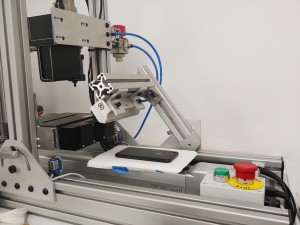
Physicists at the University of Warsaw, Poland, have documented the first ever hologram of a single photon. Leading to this pioneering success, the new measurement technique applies holography concepts to quantum phenomena, beckoning the question: Does this work at Warsaw mark the birth of quantum holography?
What is quantum holography?

“Quantum holography is a novel optical method that enables the full characterization of single-photon spatial wavefunction, including its amplitude and phase,” explains doctoral student Michal Jachura at the University of Warsaw’s Faculty of Physics, adding that he was responsible for building the experimental setup and performing all measurements, including the first registration of a single photon’s hologram.
Acknowledging his supervisors and collaborators, the student says, “On the conceptual level, the method has been invented by Dr Wojciech Wasilewski and perfected by Dr Radoslaw Chrapkiewicz. I have just noticed the analogy between our technique and standard optical holography, which gave rise to the name ‘quantum holography’ and the title of our publication, ‘Hologram of a single photon.’ “ The article Jachura is referencing is published in Nature Photonics.
Believed to be impossible
Successfully creating a hologram of a single photon becomes an even more significant achievement considering that until quite recently that feat was believed to be impossible due to fundamental laws of physics. “In my opinion, our method is one of the most compact tools for retrieving the full spatial information about a single photon, which significantly improves our control over this degree of freedom,” the researcher says. “It also sheds new light on the two-photon interference hitherto treated as a curiosity rather than some useful phenomenon.”
Regarding the potential impact of his team’s breakthrough on the future of light-based technologies, Jachura believes that the work can contribute “a new perspective on effective information coding in a spatial structure of a single photon, which can find numerous applications in deep-space communication and quantum cryptography.”

Initial key application: measurement of single photon spatial wave function
As he mentioned above, the initial key application of one-photon holograms is the measurement of single photon spatial wave function. However, since the results have been published only very recently, the researcher notes “it is extremely difficult to predict how our idea will evolve and where it could be implemented.”
Regardless of future applications, this groundbreaking work of the Warsaw scientists has unearthed fundamental new knowledge in the area of quantum physics. “I have learned that the two-photon interference significantly depends on the local phase of the single photon, which was of minor interest or almost unnoticed before,” Jachura attests. “From a more general point of view. I have also convinced myself that the phase of the wavefunction is not just a formal mathematical object, but it can be directly observed in a relatively simple optical experiment.”
Consequently, Jachura and his collaborators will now be building on these new fundamentals. “One of the potential next steps in this research is to employ the quantum holography for two-dimensional reconstruction of the spatial wavefunction,” the student projects. “It would also be extremely compelling to measure the hologram of a single photon in the mathematically analogous spectral domain instead of spatial.”
Written by Sandra Henderson, research editor Novus Light Technologies Today























 Back to Features
Back to Features





























